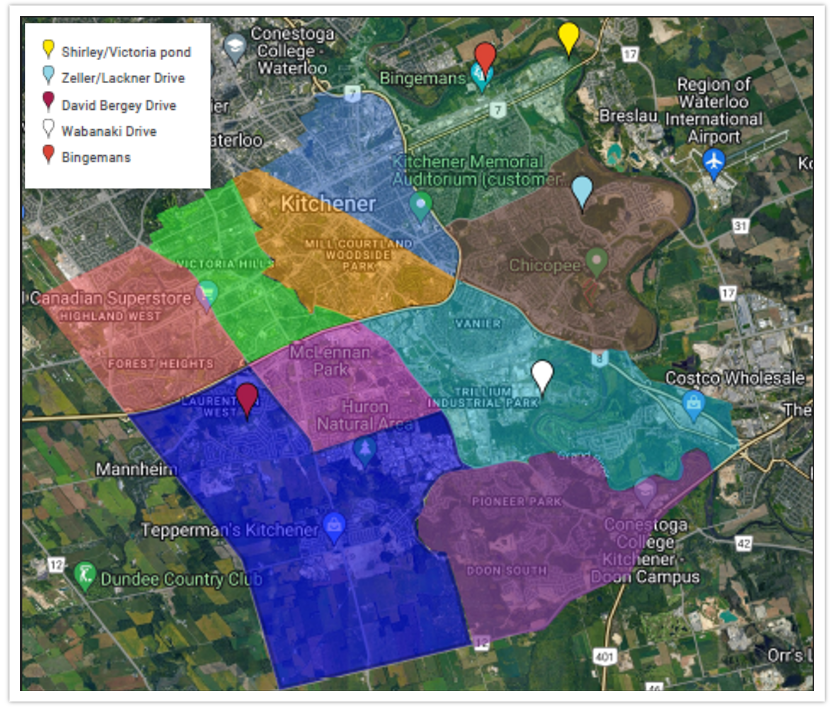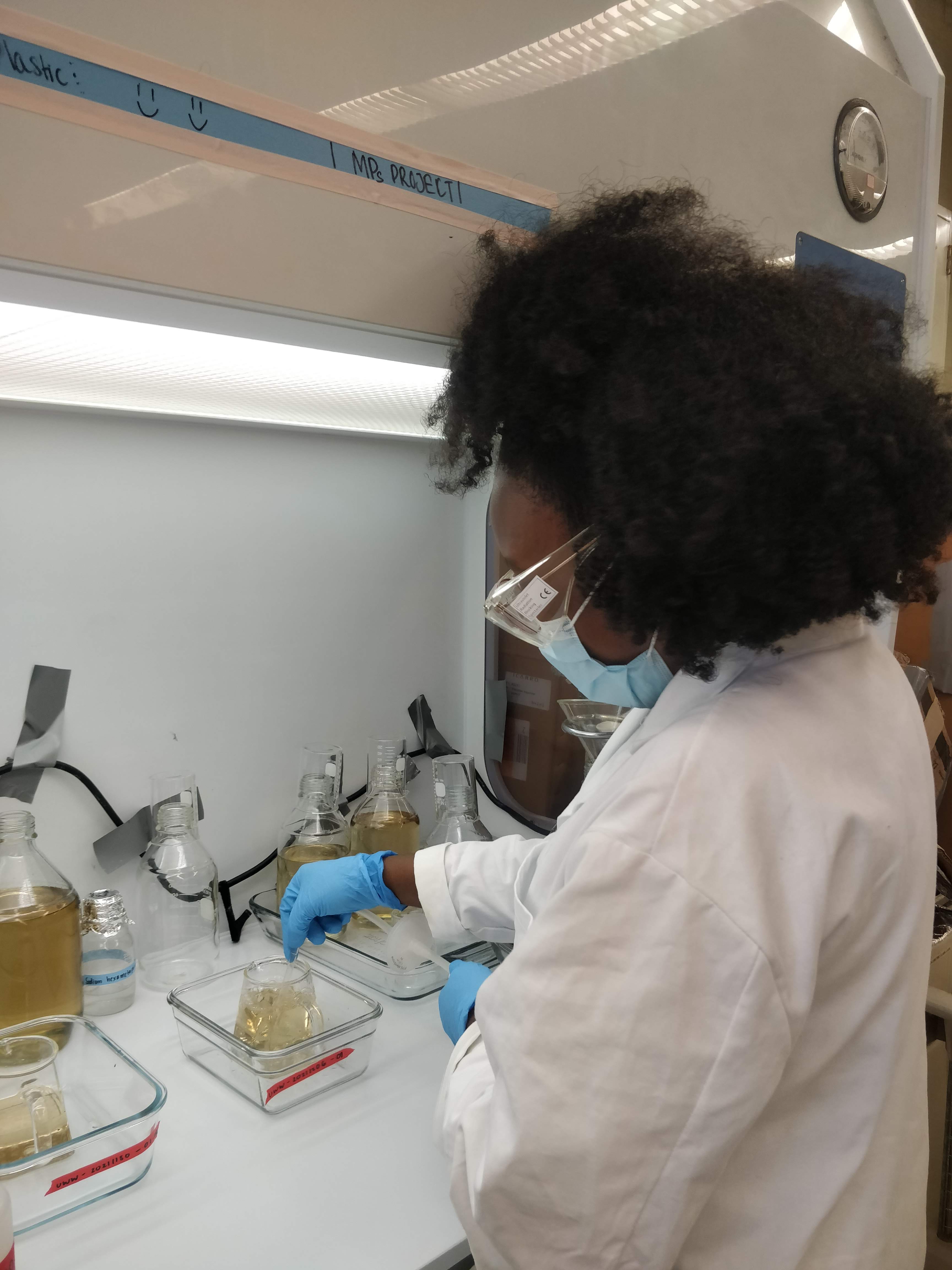
As part of our research, we are exploring how much urban areas contribute to microplastic pollution. One way to do this is to look at sediments in stormwater management ponds. These ponds collect runoff water from urban landscapes so they can act as unique archives of microplastics loads from the sub-watersheds that drain into them. This is because to some extent, they retain the materials that make it into the ponds, including microplastics.
Since 2021, we have been working with the City of Kitchener, as part of our ongoing NSERC-funded Microplastics Fingerprinting project, to study microplastics accumulation in the city’s stormwater pond sediments. Together, we collected sediment samples from five stormwater ponds that drain sub-watersheds with different land uses and similar sediment ages (Figure 1). The City of Kitchener provided the operation and maintenance information that we needed, such as the frequency of sediment clean out and land use statistics.

Map of five sampling sites within the City of Kitchener.
We are collecting sediment samples along transects from the inlet to the outlet of the ponds in May and June of this year. Measuring the sediment height enables us to estimate total sediment accumulation rates for the ponds, while collecting samples allows us to characterize the spatial variation in microplastics abundances and accumulation rates within the ponds. We are measuring both concentrations and accumulation rates to better understand how many microplastics are washing off into the ponds from the city’s sub-watersheds.

Research team samples stormwater management pond.

We are now analyzing the sediment samples in the laboratory to evaluate how different land uses effect microplastic abundances and accumulation rates in the sediments. We are also analyzing sediment organic carbon content, mineralogy, and sediment particle size to evaluate if and how they impact microplastics accumulation. Our hypothesis is that catchment land use is an important factor in microplastics accumulation rates through microplastics loads, mineralogy, sediment particle size, and/or organic carbon content in the pond sediments. Our intent is to use the microplastics accumulation rates from our five study sites to estimate the accumulation rates for the rest of the stormwater ponds in Kitchener and across the Grand River watershed.
At the same time, we are also developing model simulations to provide insight into how microplastics loads respond to changing land use, stormwater management practices, and climate change-induced extreme rainfall events. This will help us understand what is happening across other urban sub-watersheds like those that drain into the City of Kitchener stormwater ponds. The stormwater pond microplastics accumulation data and model simulations will help fill important knowledge gaps and provide essential information to support effective stormwater planning and management to mitigate microplastics loading to downstream water bodies such as the Grand River and Lake Erie.
Areating samples in the lab.